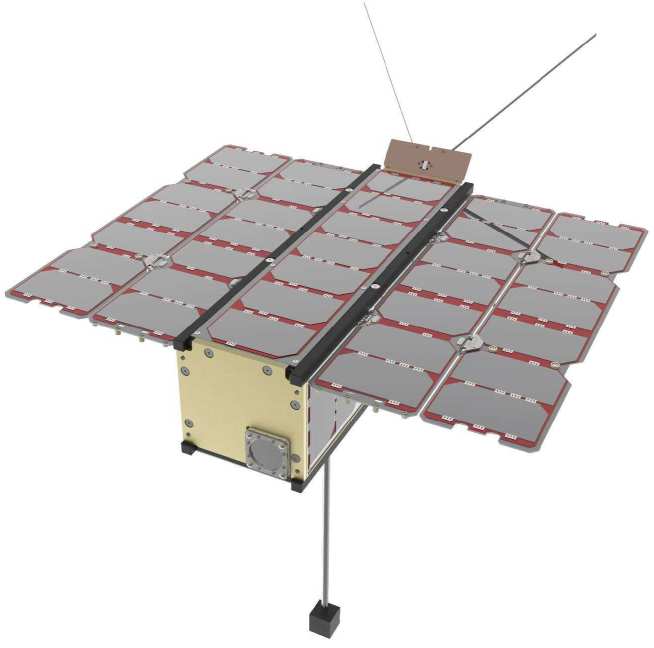RadCube
RadCube is an ESA technology demonstration mission, focused on demonstrating the use of small satellites (CubeSat form factor) and minaturised instrument technologies for space weather monitoring.
Mission Summary

RadCube is an ESA technology demonstration mission performed under the auspices of the GSTP programme. The CubeSat development is led by C3S (Hungary), and successfully launched on 17 August 2021 at 01:27 UTC to a sun-synchronous low-Earth orbit (LEO).
Imperial College London is providing MAGIC (MAGnetometer from imperial College), a vector magnetometer built around magnetoresistive sensors, which will be used to measure the magnetic field and monitor magnetospheric space weather via the detection of field aligned currents and changes in the magnetic field. MAGIC is part of RadMag, a compact instrument suite led by EK (Hungary) which also consists of energetic particle detectors (RadTel). MAGIC will be deployed by means of a tape spring motorized boom provided by Astronika (Poland).
The current status of RADCUBE is in orbit!
RADCUBE
RadCube
- Launch Date: 17 August 2021
- Orbit: Low-Earth Orbit, Sun-synchronous.
- Mission Duration: 1 year.
- Imperial College Involvement: MAGIC: 3-axis magnetoresistive sensor to measure the Earth's magnetic field and perturbations caused by geomagnetic storms and substorms.
- Imperial College Team Lead: Dr Jonathan Eastwood.
External Links
ESA Technology CubeSat programme
MAGIC on RadCube conference presentations:
- 4th ESA CubeSat Industry Days, Jun 2019;
- 10th European CubeSat Symposium, Dec 2018;
- 15th European Space Weather Week, Nov 2018;
- Open Source Cubesat Workshop, Sep 2018
Imperial College Contact
For more information, please contact:
Dr. Jonathan Eastwood
The Blackett Laboratory
Imperial College London
SW7 2AZ
UK
Email: jonathan.eastwood@imperial.ac.uk


